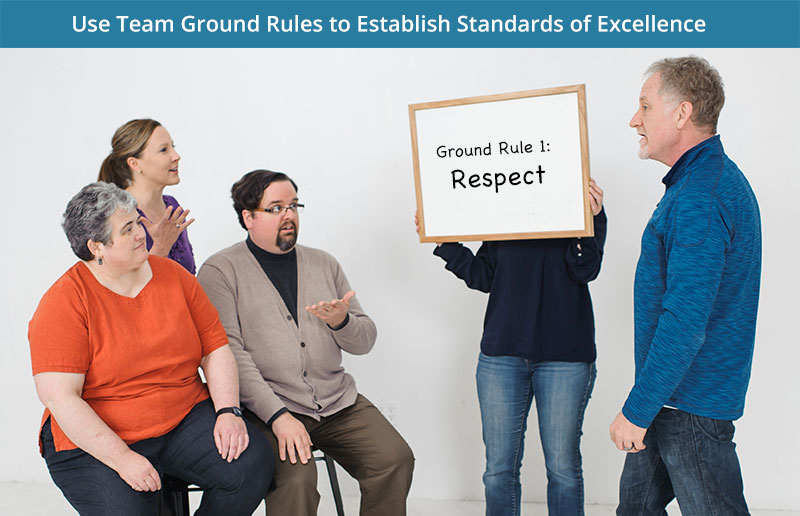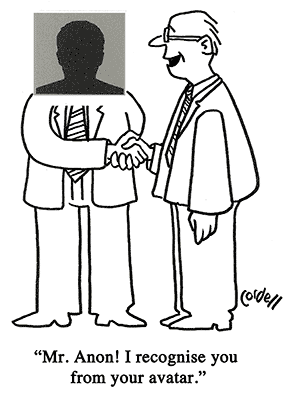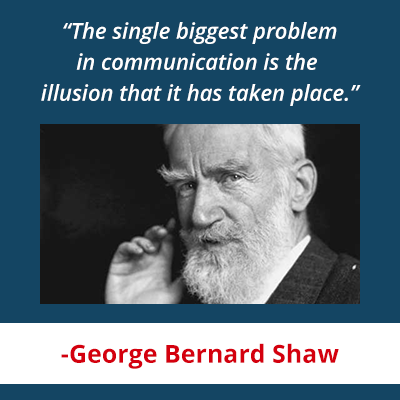Using Ground Rules to Improve Engagement and Run Excellent Team Meetings
You get what you tolerate.
I’ve heard this adage many times when complaining about my dog’s behavior, and occasionally regarding my children too. The person sharing that wisdom is telling me that my dog’s and my children’s poor behavior persists because I allow it to; because I’m creating the conditions where that kind of thing can occur not just once, but repeatedly.
Recently we hosted a webinar on how to increase engagement during team meetings, and we asked people who registered about the number one meeting engagement problem they hoped we could help solve.
Several registrants asked about how to deal with the person who won’t stop talking, making it hard for anyone else to get a word in. Several others asked about how to get people to show up on time, or even to show up at all.

I shared some specific techniques for helping with these situations in the webinar, but as more and more of these replies kept coming in, I couldn’t help but hear that adage echo in the back of my head.
You get what you tolerate.
While I believe that’s true to a degree, I never found it particularly useful!
I didn’t appreciate it when people told me to just “stop tolerating” undesirable behavior from my kids and my dog. I wanted advice that went beyond “Well, don’t let them do that!” I gritted my teeth, rolled my eyes, and admitted that yes, sure, I’m tolerating this behavior I guess – but what else am I supposed to do?!
That’s the challenge faced by many meeting leaders when it comes to the long-winded participant. How exactly are you supposed to “not tolerate it” when that one person—let’s call him Fred—decides to keep talking about his pet project? Do you just cut him off? Do you kick him out? Do you follow the lead of our U.S. Senators and hurl a talking stick at him?
Not likely.
You can do a lot with how you structure and lead your meeting to minimize this problem. The facilitation literature includes all kinds of tips specifically for this issue.
For most people, though, redesigning every meeting just to work around Fred isn’t realistic.
Instead, I recommend considering a more direct approach by creating team ground rules for your meetings.

Ground rules give everyone a chance to manage Fred-including Fred! When you work with your team to establish an expectation that everyone in meetings will keep their comments brief and relevant, you can all hold each other to it.
Ground rules give you a tool you can use when someone goes too long. This means the burden and the power to manage the conversation falls not just on the meeting leader – ground rules give everyone on the team a tool they can use!
It’s important to remember that the people who take more than their fair share of meeting time may not realize the impact they have on others. They may feel that no one else wants to speak, and it’s up to them to carry the conversation. This is certainly what happens with me and my middle child. He’s at that age where he doesn’t talk to his parents much, so I find myself just jabbering on to fill the vacuum.
Over-talkers may not be able to sense social queues well. I know several people who will admit they can’t “read” other people, and they actually appreciate a bit of subtle coaching to help them avoid unintentionally upsetting others.
Finally, they may be waiting for someone else to acknowledge them, and will just keep talking until someone does. This can happen a lot when people are nervous or worked up – they keep talking until someone assures them that they’ve been heard.
Another possibility: they could be the type that thinks out loud, getting carried away in their own verbal thought process without really noticing the minutes ticking by. This is my particular foible; it’s taken me a lot of years to clue in to my husband’s impatient toe tapping as he waits for me to get to the point!
Or finally, it’s possible they could be jerks who like to dominate everyone else with their inane babble! On balance, though, this last option isn’t the most likely.
Whatever the reason, when you set a clear expectation about the kind of behavior the group wants in meetings, you can talk openly about that behavior in the group. In other words, when you start talking about what you want, it becomes easier for everyone to talk about what they want. If you’re uncomfortable with the idea of suggesting ground rules to your team, please consider how obvious that last sentence is.
Then once you have ground rules, if someone violates those expectations and you all do nothing about it – well, I’ve heard it said: you get what you tolerate.
Let’s explore what ground rules are and how to put them in place for your team.
Tool: Ground Rules
Ground rules detail the code of conduct for a meeting and the team, explaining the behavior that’s expected of all participants. Team ground rules should be created and agreed to by everyone in the team together, because groups more easily accept and abide by rules they’ve set themselves.
Another adage my wise advisors tell me:
If you think you have an agreement and the other person doesn’t stick to it, then you didn’t have an agreement, did you?
It’s very common for workshop facilitators to establish ground rules at the beginning of the workshop. What’s less common—but which has a higher positive impact over time—is the establishment of ground rules at the team, department, or organization level.
A Ground Rule by any other name may possibly smell less
Some people bristle at the idea of setting “Ground Rules” because it sounds too restrictive and punitive. If the idea of working with your team to set “Rules” rubs you the wrong way, consider these alternatives:
- Meeting Code (as in Code of Conduct, or Pirates’ Code)
- Meeting Manifesto (akin to the Agile Manifesto, outlining shared principles)
- Meeting Guidelines or Protocols or… you get the idea.
The other common name for Ground Rules is Team Norms (meaning “adopted standards”). If that works for you, go for it. One caution, though: people may use the term norm interchangeably to refer to your written “Norms” and also to any normal-but-undesirable behavior in the group, as in “Sally’s 6 minute’s late, as per norm,” which can weaken these agreements over time.
While the ground rules you use should be developed collaboratively with your team, it’s always helpful to start with some examples. Here are some sample ground rules that we’ve used to reinforce those behaviors the research indicates contribute most directly to meeting quality. You can find many other examples online and linked in the resources below.
A few of these directly enable teams to manage the person who hogs the time. I’ve made these bold.
Sample Ground Rules for a Team, Department, or Organization
Again, these are examples only.
Don’t think some of these would fly with your group? Dislike the wording?
Please please please! Do what works for you!
That is, in fact, the whole point of the exercise.
Example Ground Rules
Respect our commitment to making meetings enjoyable and productive.
- We adopt these ground rules as our shared commitment to doing great work in meetings. These are our rules; we can and will change the rules together if we feel there is a better way.
- Everyone is responsible for enforcing the ground rules. Notice when we have strayed, and speak up.
(This one gives you and everyone else permission to say something if you feel there’s a problem.)
Respect everyone’s time.
- Start on time, end on time.
- Communicate in plenty of time about any times that need to change.
- Share the time; do not monopolize the discussion or rob others of the time they need to share their perspective.
(This one says that it is a problem if one person does all the talking.)
Respect the work of the meeting.
- Know the meeting’s purpose and desired outcomes. If this is unclear, ask.
- Come prepared and ready to engage.
- Information is the raw material of results. Be ready to contribute any information you have that will improve the results in this meeting.
- Everyone is responsible for keeping the meeting on track. Speak up if you feel the group is drifting.
- Document clear commitments then follow-through; walk your talk.
Respect each other as human.
- Assume best intentions, but do not assume anything else. Ask questions to better understand anything that is unclear or troubling.
- Listen when others speak. Remember that no one has all the information, and don’t interrupt.
(This rule, in combination with a well-run go-around, makes it possible for meeting leaders to get the opinions of several people into the discussion before calling on the dominant person and asks the dominant person to wait their turn.) - Share your views and concerns in the room. Show each other courage and respect by having the tough conversations that need to be had directly.
- Treat each other with kindness and tolerance first. We all have tricky days when we aren’t at our best. You will appreciate this tolerance when that tricky day is yours.
- Take care of yourself. If you need to step out or take a break, do it. The group values your participation, so do what you need to do so you can devote your full attention.
- Have fun!
How and When to Establish Team Ground Rules
Teams typically develop ground rules during team formation or alternatively, as part of a meeting improvement initiative.
Teams that are just forming can set their ground rules as one part of their larger working team agreement by asking “What agreements or ground rules do we want to set for our meetings?” as one item on the agenda.
For a template walking you through the creation of a full on Working Agreement, check out Lisette Sutherland’s process for setting a “Remote Team Working Agreement” (Tip: you don’t have to be a remote team to use it.) You’ll also see expectations for meetings discussed as one part of Paul Axtell’s process for introducing a new leader to a team. Finally, if you’re leading a sensitive conversation, take a look at the Guidelines for Leading a Sensitive Discussion by Dr. Patricia Roberts.
Existing teams that want to improve their meetings can also create ground rules together in a short, focused meeting.
Here’s an overview of that process.
A Meeting to Set Team Ground Rules
Purpose: To decide together our shared expectations for meetings
Desired Outcomes:
- An understanding of the things we agree help us do our best work in meetings
- A documented set of agreements—or ground rules—we’ll use to make sure our meetings are effective going forward
Preparation:
Each team member should individually research these questions before the meeting.
- What are meeting ground rules and how are they used?
- What are some examples of companies or organizations that use meeting ground rules?
- Which ground rules do you think would help us hold better meetings?
Agenda:
- Introduction: What are ground rules and why should we use them?
Quickly check in with everyone and refresh the group on the purpose for this meeting. Then, discuss what people found during their preparatory research for the meeting. - What do we see when we’re working our best? What are we doing (or not doing) in our most productive and enjoyable meetings?
Discuss your team’s experience with meetings, capturing both what everyone feels works well and the challenges that the team feels keep meetings from succeeding. - Which ground rules should we adopt for our meetings?
Work together to create your initial list of ground rules. Focus on getting the right ideas out there rather than on perfecting the specific wording. These are your rules; you can always change them later. - Confirm the list: Are we agreed on these draft ground rules?
Wrap up the meeting by looking at the final list of draft ground rules as a group and answering:- Do these ground rules address the highest priority items we identified earlier? If not, is there anything else we need to change here now?
- Where will we post the ground rules so we can easily refer to them in meetings?
- Who will take responsibility for documenting these ground rules and sending them to the team?
Once you have a plan for finalizing and posting your new ground rules, you’re done!
How to Use Ground Rules
Ground rules are used to train and adjust meeting behavior. The most impactful and dramatic use of a ground rule is during a meeting when someone says:
“Sorry, but we agreed to xyz in our ground rules, so I think we need to…”
For example:
“Sorry, but we agreed to have one conversation at a time. I think Ted wasn’t quite finished with his point.”
Or
“We agreed to come prepared to meetings, but it looks like we aren’t ready to have this discussion. What should we do? Would you like to reschedule, or should we add 10 minutes to the meeting now so everyone can read the pre-work?”
Ground rules can also be:
- Shared with new team members and employees as part of the onboarding process. This helps new people know what to expect. Ideally, the new person will learn the ground rules from another team member rather than the boss, as this doubly reinforces that these are everyone’s rules to enforce.
- Posted in meeting rooms as a reminder (and as a way to demonstrate your values to visitors). Several start ups and technology companies have prominent Meeting Rules posters in their conference rooms to both remind their employees and impress outsiders with their professionalism.
- Updated to include special language and rituals that express your team’s character and unique culture. For example, some teams use the “Vegas Rule” – as in “what happens in Vegas stays in Vegas” to establish that meeting discussions are to be considered confidential.
- Shared in your organizational marketing and recruitment as an example of your team’s dedication to quality results. Yes, companies actually do this, which is what makes that prep assignment to go find examples possible!
More Sample Ground Rules and Resources
- Creating Group Guidelines for Terrific Teamwork by Northstar Faciltators
- Ground rules for a high performing team a case study by a PMI chapter, including a meeting example
- 8 Ground Rules for Great Meetings by Roger Schwarz for HBR
- 3 Steps to Implement Effective Meeting Ground Rules by Tai Tsao for Meeteor
- Craig Freshley’s Sample Ground Rules – especially useful for community and volunteer organizations
- Set ground rules for better team performance – another big list by the Talent Gear Team
Do you have ground rules that work particularly well for your team? Have you had an experience with ground rules that could benefit others?
Please share in the comments below!



